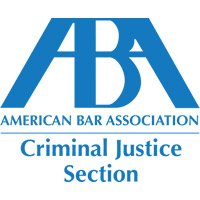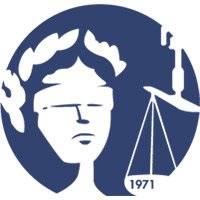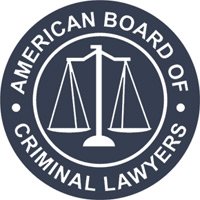POST INDICTMENT GRAND JURY INVESTIGATION
The General Rule:
The general, and well-accepted, rule is that once an individual has been indicted and the adversary roles have been established, the grand jury’s investigative function should cease as to such pending cause and the Government relegated to the discovery devices provided adversaries under the statutes and rules. See FED. R. CRIM. PRO. Rules 16 and 26.2.
U.S. v. Doss, 545 F.2d 548, 552 (6th Cir. 1976), affirmed, 563 F.2d 265, 274-76
(6th Cir. 1977) (en banc) (holding “the function of the grand jury clearly terminates with the issuance of an indictment”);
U.S. v. Kovaleski, 406 F. Supp. 267 (E.D. Mich. 1976);
U.S. v. Doe, 455 F.2d 1270 (1st Cir. 1972);
U.S. v. Fisher, 455 F.2d 1101 (2d Cir. 1972);
In re Grand Jury Proceedings (Schofield), 486 F.2d 85, 91 (3d Cir. 1973) (stating, “In the grand jury context a court will not enforce a subpoena if its purpose is to gather evidence for a pending criminal indictment or information”);
In re National Window Glass Workers, 287 F. 219 (N.D. Ohio, 1922);
U.S. v. Dardi, 330 F.2d 316, 336 (2d Cir. 1964), cert. denied, 579 U.S. 845; Beverly v. U.S., 468 F.2d 732, 743 (5th Cir. 1972) (stating,” it is improper to use the grand jury for the purpose of preparing an already pending indictment for trial”);
U.S. v. Ruppel, 666 F.2d 261, 268 (5th Cir. 1983) (holding that “the Government may not use the grand jury in place of discovery for the purpose of preparing a pending indictment for trial”);
In re Grand Jury Proceedings, 632 F.2d 1033, 1041 (3d Cir. 1980);
U.S. v. Fahey, 510 F.2d 302, 306 (2d Cir. 1974);
U.S. v. Beasley, 550 F.2d 261, 266 (5th Cir. 1977) (emphasizing “prosecutorial agents may not use the grand jury for the primary purpose of strengthening its case on a pending indictment or as a substitute for discovery”);
U.S. v. Star, 470 F.2d 1214, 1217 (9th Cir. 1972) (stating that “the government should not use the grand jury for the sole purpose of pretrial discovery in cases in which an indictment has already been returned. We condemn any such conduct
by the United States Attorney”);
U.S. v. Bloom, 586 F.Supp. 939 (S.D. Fla. 1984).
“It is firmly entrenched rule that once a defendant has been indicted, a prosecutor may not use a grand jury’s investigative powers for the purpose of securing additional evidence against the defendant for use in the upcoming trial.” In re
Grand Jury Proceedings, 632 F.2d 1033, 1041 (3d Cir. 1980).
In U.S. v. Doss, the Third Circuit recognized the danger in permitting the grand jury to be employed as a discovery device for the prosecution. U.S. v. Doss, 563 F.2d 265, 276 (6th Cir. 1977)
“The function of the grand jury clearly terminates with the issuance of the indictment. It has no relationship to the trial itself. We find no constitutional, statutory or case authority for employment of the grand jury as a discovery instrument to help the government prepare evidence to convict an already indicted defendant. Such a use of the grand jury would pervert its constitutional and historic function.” U.S.
- Doss, 563 F.2d 265, 276 (6th Cir. 1977). See also U.S. v.
Lawn, 115 F. Supp. 674, 677 (S.D.N.Y. 1953).
IMPERMISSIBLE TO EMPLOY THE NON-RECIPROCAL BENEFITS OF A GRAND JURY INVESTIGATION FOR DISCOVERY AGAINST AN INDICTED DEFENDANT
The unfairness of the prosecution utilizing the grand jury as a discovery device, flows from that body’s “broad investigative powers.”
WRIGHT, FEDERAL PRACTICE AND PROCEDURE, CRIMINAL: §1.01 at 197;
Branzburg v. Hayes, 408 U.S. 665, 688 (1972);
U.S. v. Calandra, 414 U.S. 338, 343-44(1974);
Blair v. U.S., 250 U.S. 273, 282 (1919) (holding that “It is a grand …inquest” when compared to the meager discovery afforded the criminally accused under FED. R. CRIM. PRO. Rule 16(a)).
For all practical purposes, the grand jury is the prosecutorial tool of the executive branch;
In re Grand Jury Proceeding, 486 F.2d 85, 90 (3d Cir. 1973);
U.S. v. Cleary, 265 F.2d 459, 461 (2d Cir. 1959), cert. denied, 360 U.S. 936 (holding that “Basically the grand jury is a law enforcement agency”).
In re Grand Jury Proceedings, 613 F.2d 501 (5th Cir. 1980);
and the use of this non-reciprocal device for the sole and exclusive benefit of the prosecution would create an intolerable disparity in the pretrial discovery rights between the accused and his accuser. The adversary process having been initiated by the return of the grand jury’s indictment, both sides should be relegated to the avenues of discovery provided for in the Rules and Statutes. See FED. R. CRIM. PRO. Rules 12, 12.1, 12.2, 16. See also 18 U.S.C. § 3500.
“The Government’s ability to obtain pretrial discovery is a function of statute or rule, see, e.g., FED. R. CRIM. PRO. Rule 16, which may not be enlarged through conversion of the grand jury, an arm of the judiciary, into a tool of the executive”. REEF, REPRESENTATION OF WITNESSES BEFORE FEDERAL GRAND JURIES (1978).
This is especially true, where, as here, there is no reciprocal discovery mechanism available to the defendant to call and compel testimony from witnesses prior to trial.
Wardius v. Oregon, 412 U.S. 470 (1973).
In Wardius, the Supreme Court recognized the inherent disparity in resources between even an affluent accused and his accuser, noting that the Fifth Amendment “…does speak to the balance of forces between the accused and his accuser”. Wardius, 412 U.S. 470, 472 (1973)
“[t]he [prosecution’s] inherent information gathering advantages suggest that if there is to be an imbalance in discovery rights, it should work in the defendant’s favor.” Wardius, 412 U.S. 470, 472 (1973).
STANDARD APPLIED
Most Courts have applied the test that a grand jury subpoena will be quashed only “where the sole or principal purpose in further inquiry of appellants is to gather information for the trial of “an indicted witness” (emphasis supplied).
Beverly v. U.S., 468 F.2d 732, 743 (5th Cir. 1972);
U.S. v. Doss, 563 F.2d 265, 267 (6th Cir. 1976).
And the burden is upon the subpoenaed witness to demonstrate that the “sole or dominant purpose of seeking the evidence post indictment is to prepare for the pending trial.”
In re Grand Jury Proceedings (Johanson), 632 F.2d 1033, 1041 (3d Cir. 1980).
INCIDENTAL USE OF INFORMATION OBTAINED THROUGH GRAND JURY IN PENDING TRIALS
Courts have indicated that so long as it is not the prosecutor’s “sole or principle” purpose in obtaining evidence through a grand jury, the evidence thereby obtained may be incidentally used in a pending trial.
“It is firmly entrenched that once a defendant has been indicted, a prosecutor may not use a grand jury’s investigative powers for the purpose of securing additional evidence against the defendant for use in the upcoming trial…. But a good faith inquiry into other charges within the scope of the grand jury’s lawful authority is not prohibited even if it uncovers further evidence against an indicted person.” (emphasis supplied). In re Grand Jury Proceedings (Johanson), 632 F.2d 1033, 1041 (3d Cir. 1980).
In U.S. v. Beasley, the Court stated:
“There is nothing improper about the government continuing its investigation after an indictment is filed, with obvious limitations, of course Similarly, prosecutorial agents may
not use the grand jury for the primary purpose of strengthening its case on a pending indictment, or as a substitute for discovery, although this may be an incidental benefit.” (emphasis supplied). U.S. v. Beasley, 550 F.2d 261 (5th Cir. 1977).
See also U.S. v. Briasch, 505 F.2d 139, 147 (7th Cir. 1974) (holding that “[t]he government has every right to interrogate witnesses on subjects relevant to a continuing grand jury investigation even when the evidence received may also relate to a pending indictment”);
U.S. v. Dyer, 722 F.2d 174 (5th Cir. 1983) (reasoning that “the requested information was in connection with a new offense”);
In re Grand Jury Proceedings, 632 F.2d 1033, 1042 (3d Cir. 1980) (holding “investigation of other persons”);
U.S. v. Ruppel, 666 F.2d 261, 268 (5th Cir. 1983)(“discovering …the identity of …alleged ‘unknown persons'”);
U.S. v. Sellaro, 514 F.2d 114, 121 (8th Cir. 1973)(stating, “the testimony was taken in connection with the investigation of the “ . . . “activities of other persons”).
BY HOOK OR BY CROOK
On rather strained analysis, one court has permitted the prosecution to seize by search warrant, subpoenaed documents in the possession of a witness who appeared with them in his possession at a hearing on his motion to quash the subpoena. The court held that an order denying a motion to quash is not an appealable order a motion for return of property under Rule 41 will not lie where the property is in any “way tied to a criminal prosecution …against movant”.
In re Grand Jury Proceedings (Uresti), 724 F.2d 1157 (5th Cir. 1984):
“Uresti had brought the subpoenaed documents to court that morning, intending to refuse to deliver them to the grand jury if his motion to quash was denied. While Uresti awaited his grand jury appearance, and after the hearing of his motion to quash was taken under advisement, a local Federal Magistrate issued a search warrant for the documents sought by the grand jury subpoena. The box of documents Uresti brought to court that morning was seized pursuant to the warrant as he waited in the grand jury witness room.”











